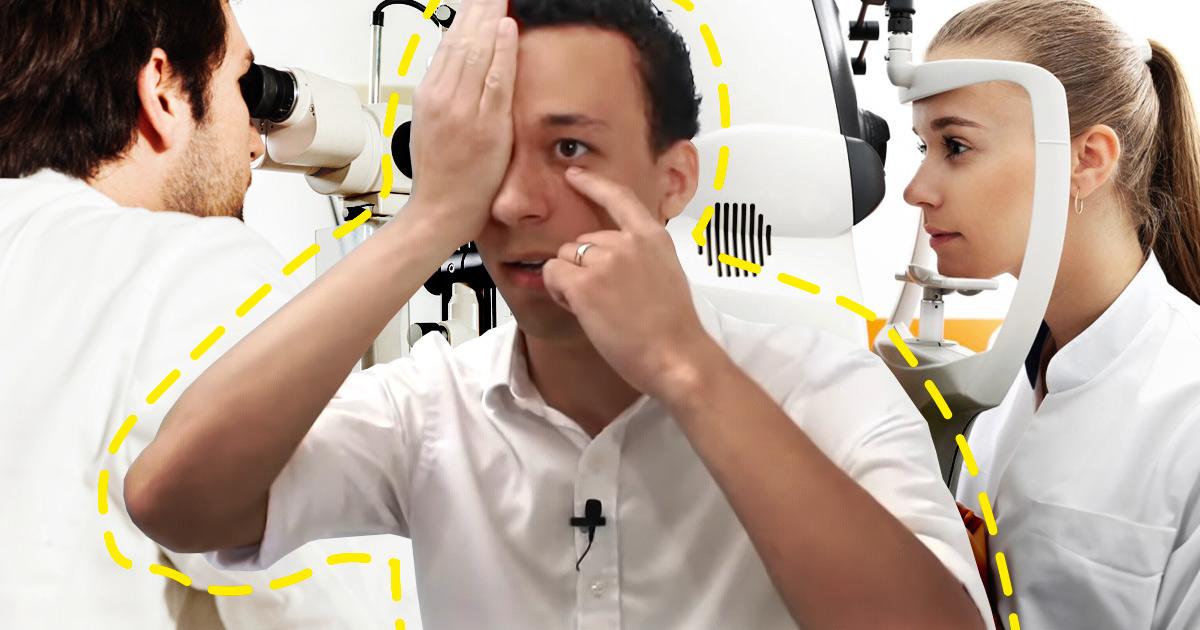What Is A Peripheral Vision Test? Why Do You Need To Do It?

Maintaining good eye health is a crucial aspect of overall well-being. Regular eye check-ups not only ensure optimal vision but also contribute to the early detection of various eye conditions and even potential non-eye-related health concerns. Among the array of tests that should be an integral part of your routine eye examination, the peripheral vision test holds a significant place. In this article, we delve into the depths of what a peripheral vision test entails and why its inclusion is of paramount importance.
What Is a Peripheral Vision Test?
At its core, a peripheral vision test, also referred to as a perimetry test or a peripheral eye test, is a diagnostic examination designed to evaluate the extent of your visual field, particularly the areas that lie outside your central line of sight. While your central vision allows you to focus on objects directly in front of you, your peripheral vision extends your awareness to the surroundings – to the left, right, up, and down, effectively expanding your field of view.
This test serves as a crucial tool for detecting potential visual field issues and underlying health conditions that might otherwise go unnoticed. Peripheral vision loss, which could indicate the presence of eye diseases such as glaucoma and other optic nerve disorders, is a significant warning sign that merits prompt attention.
What Does the Test Reveal?
The primary objective of a peripheral vision test extends beyond a mere assessment of your visual field; it serves as a gateway to uncovering potential warning signs of underlying eye conditions and broader health concerns. Within the vast expanse of your peripheral vision lies a wealth of information that can illuminate the presence of blind spots or areas of reduced sensitivity, scientifically termed scotomas. These scotomas, when identified through the test, hold the potential to indicate a spectrum of eye conditions, with glaucoma taking center stage.
Glaucoma, a stealthy and often asymptomatic eye disease, has a propensity to manifest through peripheral vision loss. By detecting such loss, a peripheral vision test acts as a sentinel, raising the alarm before the disease advances to more critical stages. But the benefits of this test transcend the realm of ocular health. It unveils a broader canvas, where irregularities within your peripheral vision might reveal clues to non-eye-related health issues.
Intriguingly, the peripheral vision test can unveil hidden whispers of your overall well-being. Elevated blood pressure, a condition that might otherwise elude immediate attention, can often leave its mark within the periphery of your vision. Likewise, diabetes, multiple sclerosis, and even strokes can cast subtle shadows in your visual field. A peripheral vision test, akin to a skilled detective, can unearth these traces, propelling you towards early intervention and effective management.
How Is It Done?
The process of undergoing a peripheral vision test is seamlessly integrated into the tapestry of a comprehensive eye examination, serving as a vital thread in the fabric of ocular health assessment. One of the commonly employed methods is the “confrontational” peripheral vision test. This method engages your active participation as your eye care professional orchestrates a dance between your central focus and the periphery of your vision.
Imagine being asked to gaze upon a central target – it could be your eye doctor’s eye, an upraised finger, or a designated point. With one eye covered, you become attuned to this central beacon while keeping a vigilant watch over the peripheral realms. As objects or movements materialize on the fringes of your vision, your task is to swiftly and accurately communicate their presence. This nuanced interplay between central fixation and peripheral perception unveils the hidden dynamics of your visual field.
Automated machines adorned with blinking lights present another avenue for peripheral vision testing. These machines, akin to symphony conductors, orchestrate a symphony of lights within your visual field. These lights, appearing with varying intensities and at diverse locations, beckon your responses. By pressing a button whenever a light emerges within your peripheral canvas, you facilitate the creation of a comprehensive map of your visual sensitivity.
Alternatively, specialized cards, adorned with intricate lines and patterns that orchestrate optical illusions, are wielded to test your peripheral vision. These visual enigmas compel your eyes to navigate a labyrinth of visual cues, unraveling the subtlest nuances of your peripheral prowess.
Why Taking a Peripheral Eye Test Is Important?
The significance of participating in a peripheral eye test unfurls like a tapestry woven with threads of vigilance and prevention. In the realm of ocular health, early detection is an invaluable compass that steers the course toward effective management and the prevention of escalating concerns. The peripheral vision test, with its ability to unveil subtle whispers of vision-related anomalies, assumes the role of an initial sentinel – a precursor to more in-depth assessments and specialized investigations.
Central to the essence of this test is the revelation that peripheral vision loss is not always accompanied by conspicuous alarms. Its subtlety often veils its presence from conscious awareness. It is this quiet, unassuming nature that underscores the need for regular and proactive testing. By actively engaging in periodic peripheral vision assessments, you bridge the gap between the visible and the concealed, elevating your ocular well-being to a plane of proactive vigilance.
Beyond the realm of eye diseases, this test serves as a cornerstone in the holistic evaluation of your visual landscape. By unraveling the tapestry of peripheral vision, it contributes to the broader canvas of visual well-being. This proactive approach to ocular health transcends the confines of individual sight, ushering you towards a life characterized by an optimal quality of vision, and by extension, a life where the world is unveiled in all its clarity and vibrancy.
Have a Regular Eye Peripheral Test
In conclusion, a peripheral vision test is an essential component of a comprehensive eye exam that offers insights into the health of your eyes and potentially your overall physical well-being. As technology advances and medical knowledge deepens, the importance of these tests becomes even more apparent. By proactively participating in regular eye examinations, including the peripheral vision test, you take a proactive step toward preserving your vision and overall health. Make it a habit to prioritize your eye health and consult your eye care professional for routine check-ups and screenings. Your eyes will thank you for it.
Remember, your eyes are not only windows to the world but also gateways to your health. Don’t overlook the significance of a peripheral vision test – it might just be the key to ensuring a lifetime of clear sight and optimal well-being. Incorporate this essential aspect of eye care into your regular health routine, and take the first step toward a healthier, brighter future for your eyes and beyond.

